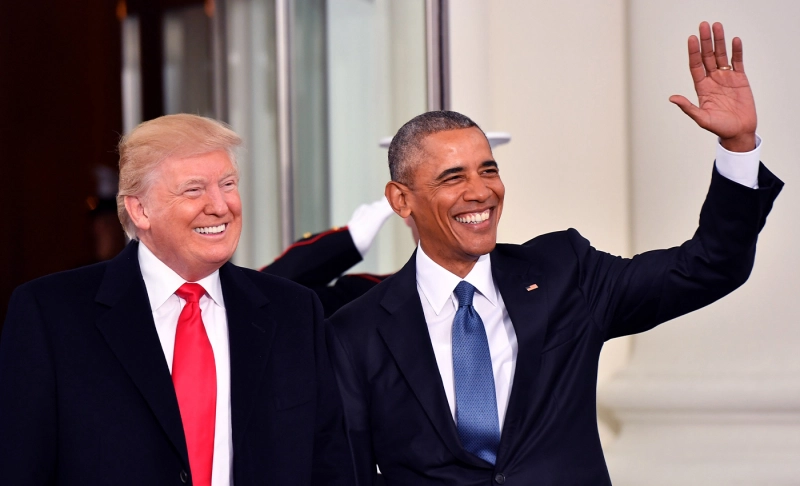By: Priyam Nayak
August 21 2020
Partly True: Economic growth was higher under Obama and Biden than it was under Trump.

The Verdict Partly_True
Quarterly GDP growth was higher under the Obama administration. However, overall GDP growth was higher under the Trump administration.
Quarterly GDP growth was higher under the Obama administration. However, overall GDP growth was higher under the Trump administration. When President Barack Obama assumed office in 2009, the American economy was confronting the worst economic recession since the Great Depression in 1929. By the end of 2009, the GDP had contracted by 2.5%. The annual GDP growth rate started to bounce back from Q3 2009, and the trend continued until Q4 2010, after which it began to fall before picking up again in Q2 2011. A report published by the Washington Center for Equitable Growth attributed the uneven recovery to the Great Recession. In 2013 when Barack Obama was re-elected as President, there were peaks where the quarterly percentage GDP change from the preceding period (seasonally adjusted annual rate) peaked more than 4 percent – in Q2-2014 and Q3-2014, the clocked growth percentage rates of 5.5 percent and 5.0 percent respectively. Under the Trump administration, the highest quarterly percentage change in GDP was 3.9% in Q4 in 2017. Data from the U.S. Bureau of Economic Analysis shows that when the Great Recession ended between 2009 and when Trump took office in January 2017, the economy had been growing at an annual rate of about 2.2 percent. Although the average GDP growth rate has been higher under the Trump Administration (2.4%) compared to that of Obama in his two terms (2.2%), as per the data from U.S. Bureau of Labour Statistics, the quarterly GDP percentage changes under Trump, show the economic growth did not cross the 5% mark in any quarter. In 2020, the U.S. economy suffered drastically because of the coronavirus pandemic shrinking at a 32.9% annual rate between April and June - the deepest decline since the government began keeping records in 1947 and three times more severe than the prior record of 10% set in 1958. When Trump assumed office in January 2017, the unemployment rate was already low at 4.7 percent. Since then, the rate has fallen an additional 1.2 percentage points, taking it down to 3.5 percent. According to the U.S. Bureau of Labor Statistics, the jobless rate has been continuously falling since February 2010 before it started peaking in March 2020 until it reached an all-time high of 14.7 percent in April 2020 due to the coronavirus pandemic. According to Total Nonfarm data from the U.S. Bureau of Labor Statistics, the job growth phase began in February 2010. The trend continued uninterrupted until February 2020, following which unemployment rates kept climbing because of the coronavirus pandemic. The BLS’s datasets date back to 1939, and this is the longest period of consecutive months of job growth. According to a report published by the Center on Budget and Policy Priorities, the pace of monthly job losses slowed dramatically soon after President Obama and Congress enacted the Recovery Act in February 2009. It stated, ‘the trend in job growth in 2010 was obscured by the rapid ramp-up and subsequent decline in government hiring for the 2010 census, but private employers added 18.0 million jobs to their payrolls in 94 consecutive months of job creation from March 2010 through December 2017, an average of 191,000 jobs a month. Total employment (private plus government) rose by 17.9 million (190,000 a month).’ The median household income, which indicates the income of the household in the very middle of the income distribution, rose for the first time after the Great Recession again in 2015, under Obama. The rising trend continued even during the Trump administration, until 2020. Another important determinant concerning the economy’s performance under the Trump administration is the introduction of the Tax Cuts and Jobs Act (TCJA). A study published by Brookings showed that TCJA would stimulate the economy in the near term. Still, the long-term impact on gross domestic product (GDP) will be small. Although manufacturing output received a bump in 2018 after the tax cuts, a report by The Economist suggests the impact of the tax cuts is difficult to assess. Given the various circumstances the two presidents faced during their tenure, it is not possible to ascertain whether the economy performed better during the Obama administration. However, Trump indeed inherited a growing economy with vital economic parameters exhibiting a steady progress when he assumed office in 2017


